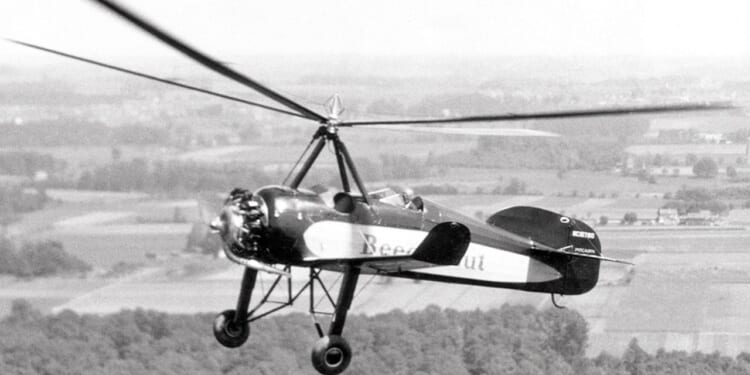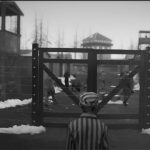The idea of the helicopter dates back to the Renaissance—but the contraptions could not be built until the development of modern aerospace engineering during the interwar period.
Few platforms in military history have evolved as dramatically over time as the helicopter. From the platform’s origins in the 1400s as a simple sketch in Leonardo da Vinci’s notebook, to its service today as a stealthy attack gunship or an experimental electric air taxi, the story of vertical flight has progressed rapidly since the dawn of the 20th century, from purely conceptual to practical to indispensable. In the modern age, innovators continue to push the envelope and make refinements that will improve helicopters further, into something fit for the 21st century and beyond.
Leonardo da Vinci Dreamed of Helicopters. Modern Engineers Built Them.
The notion of vertical flight predates powered flight by centuries. In the 1400s, Italian polymath Leonardo da Vinci sketched an “aerial screw” in his notebook—a compelling idea that wouldn’t be feasible for centuries, until the 1900s, when inventors began controlling vertical flight. In the early 1920s, American inventor Jerome de Bothezat built a “Flying Octopus,” but the contraption was far too unwieldy to be useful. Juan de la Cierva’s “autogiro,” crafted in the 1920s, was somewhat better; it was not a true helicopter, but it solved key aerodynamic mysteries such as autorotation and cyclic pitch, both necessary for stable vertical flight. De la Cierva later sold his designs to American inventor Harold Frederick Pitcairn, who further improved the autogiro’s design and popularized it within the United States.
The first true “helicopter”—Nazi Germany’s Focke-Wulf Fw 61, a fully controllable helicopter that could hover, climb, and maneuver safely—would emerge in 1936. But it was Igor Sikorsky’s VS-300, completed in 1939, that marked the debut of the now-standard helicopter configuration: a single main rotor providing lift and thrust, with a smaller tail rotor countering torque. By World War II, Sikorsky’s configuration had progressed from lab experiment to foldable prototype; the Sikorsky R-4, produced in small numbers for the US military, was used for search and rescue and reconnaissance missions, offering a glimpse of the helicopter’s tactical application.
Helicopters Took Off After World War II
The postwar decades saw the maturation, and proliferation, of the helicopter as an operational platform. Improvements in materials, engines, and rotor aerodynamics allowed for larger payloads and longer ranges. Turbine power plants replaced piston engines, delivering vastly better performance and reliability. The most iconic example from this period: the Bell UH-1 Iroquois, or “Huey,” defined the helicopter’s military application during the Vietnam War, offering medieval, troop transport, and close air support.
During the Cold War, vertical lift became truly indispensable to military operations. Platforms like the CH-47 Chinook provided heavy transport; the AH-1 Cobra introduced the dedicated attack helicopter. Vertical flight had become fundamental to military operations and civil aviation alike.
Since the 1980s, helicopters have become increasingly advanced. Digital avionics, fly-by-wire controls, composite rotor blades, and advanced countermeasure suites are all commonplace, found in staple platforms like the UH-60 Black Hawk and AH-64 Apache.
The evolution of the helicopter has not reached an endpoint, nor is the contemporary helicopter development static. Since the 2010s, helicopter development has entered a high-tech renaissance driven by digitalization, materials science, and new propulsion concepts. Networked datalinks allow real-time coordination with drones and ground units, turning helicopters into connected battlefield nodes. Hybrid and electric propulsion systems promise quieter and more efficient operations. Programs like the Sikorsky-Boeing Defiant X and the Bell V-280 Valor represent a push toward high-speed vertical lift, offering significantly enhanced performance. And of course efforts are being made to field stealthier helicopters, capable of surviving in denied air space against modern adversaries.
About the Author: Harrison Kass
Harrison Kass is a senior defense and national security writer at The National Interest. Kass is an attorney and former political candidate who joined the US Air Force as a pilot trainee before being medically discharged. He focuses on military strategy, aerospace, and global security affairs. He holds a JD from the University of Oregon and a master’s in Global Journalism and International Relations from NYU.
Image: Wikimedia Commons.


















